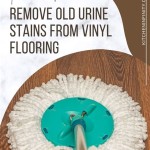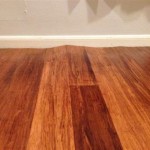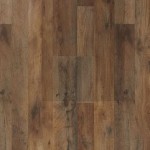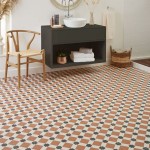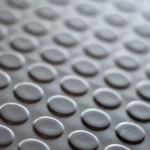The Resurgence of Vinyl Flooring: A Retro Revival
Vinyl flooring, once a ubiquitous presence in mid-20th century homes, is experiencing a significant resurgence in popularity. This revival is not merely a nostalgic glance at the past, but rather a recognition of vinyl's enhanced functionality, aesthetic versatility, and affordability in comparison to other flooring options. Modern manufacturing techniques have addressed many of the shortcomings associated with older vinyl products, resulting in a sophisticated and durable flooring solution that appeals to a wide range of homeowners and commercial property managers.
The term "retro" in the context of vinyl flooring refers to this rediscovery and adaptation of a classic material. While contemporary vinyl flooring retains the fundamental composition of its predecessors, it benefits from advancements in materials science, printing technology, and installation methods. This allows for the creation of designs that evoke the charm of vintage aesthetics while providing the performance and longevity expected of modern building materials.
This article will explore the key factors driving the vinyl flooring retro trend, highlighting the improvements in manufacturing, the diverse design options available, and the practical benefits that contribute to its growing appeal.
Durability and Performance Enhancements
One of the primary factors fueling the vinyl flooring revival is the significant improvement in its durability and overall performance. Older vinyl flooring was often susceptible to scratches, dents, and fading, particularly in high-traffic areas. It could also be vulnerable to moisture damage and cracking, especially in environments with fluctuating temperatures.
Modern vinyl flooring, however, is engineered to withstand these challenges. The introduction of multiple protective layers, including wear layers composed of polyurethane or similar durable coatings, significantly enhances its resistance to scratches, scuffs, and stains. These wear layers are available in varying thicknesses, measured in mils (thousandths of an inch), allowing consumers to choose a product that meets the specific demands of their space. Higher mil ratings indicate greater resistance to wear and tear, making them suitable for high-traffic areas such as hallways, kitchens, and commercial spaces.
Furthermore, advancements in core construction have improved the structural integrity of vinyl flooring. Many contemporary vinyl options feature a rigid core, often made from stone plastic composite (SPC) or wood plastic composite (WPC), providing exceptional stability and resistance to indentation. This rigid core also minimizes the effect of subfloor imperfections, making it easier to install on less-than-perfect surfaces. The improved core construction also contributes to better sound absorption and reduces noise transmission, making it a quieter flooring option compared to older vinyl products.
Water resistance is another key performance enhancement. While older vinyl flooring was often water-resistant, modern luxury vinyl plank (LVP) and luxury vinyl tile (LVT) options are often completely waterproof, making them ideal for bathrooms, kitchens, and basements. This waterproof characteristic eliminates the risk of water damage, mold growth, and warping, ensuring long-term durability and minimizing the need for costly repairs.
The improved durability and performance of modern vinyl flooring contribute significantly to its retro appeal. Consumers appreciate the aesthetic versatility of vinyl but are also drawn to its ability to withstand the rigors of daily life. The low maintenance requirements of modern vinyl are another attractive feature. Regular sweeping or vacuuming, along with occasional damp mopping, is typically sufficient to maintain its appearance and cleanliness.
Diverse Design Options and Aesthetic Versatility
The second major factor driving the vinyl flooring retro trend is the vast array of design options available. Advances in printing technology have enabled manufacturers to create incredibly realistic reproductions of natural materials, such as wood, stone, and tile. This allows homeowners to achieve the desired aesthetic without the cost and maintenance associated with those materials.
Luxury vinyl plank (LVP) closely mimics the look and feel of hardwood flooring, with realistic grain patterns, textures, and color variations. LVP is available in a wide range of wood species and finishes, from classic oak and maple to exotic hardwoods like Brazilian cherry and walnut. The planks can be installed in various patterns, such as traditional straight lay, herringbone, or chevron, further enhancing the visual appeal. The textured surface of LVP adds to the realism, replicating the tactile feel of real wood.
Luxury vinyl tile (LVT) offers similar design possibilities, but with the appearance of stone, tile, or concrete. LVT can replicate the look of marble, granite, slate, travertine, and other natural stone materials, providing a luxurious and sophisticated aesthetic at a fraction of the cost. LVT is also available in a variety of sizes and shapes, allowing for custom designs and patterns. The grout lines between the tiles can even be replicated using embossing techniques, further enhancing the realism.
Beyond realistic reproductions of natural materials, vinyl flooring also offers opportunities for more stylized and contemporary designs. Bold colors, geometric patterns, and abstract designs are readily available, allowing homeowners to create unique and personalized spaces. This design flexibility is particularly appealing to those who appreciate retro aesthetics, as vinyl flooring can be used to recreate the look of mid-century modern homes or other vintage styles.
The ability to mimic vintage tile patterns is a significant aspect of the retro appeal. Classic black and white checkerboard patterns, intricate mosaic designs, and bold geometric shapes are all readily available in vinyl flooring. These designs can evoke a sense of nostalgia and add character to any room. The availability of these retro-inspired designs, combined with the durability and ease of maintenance of modern vinyl, makes it an ideal choice for those seeking a vintage aesthetic without the drawbacks of older flooring materials.
Embossing techniques further enhance the realism and aesthetic appeal of vinyl flooring. Embossing creates a textured surface that replicates the feel of natural materials, such as wood grain or stone texture. This adds depth and dimension to the flooring, making it more visually appealing and tactilely satisfying. Embossing can also be used to create unique patterns and designs, adding to the overall design versatility of vinyl flooring.
Cost-Effectiveness and Ease of Installation
The third key factor contributing to the vinyl flooring retro trend is its cost-effectiveness and ease of installation. Compared to hardwood, stone, and tile, vinyl flooring is generally a more affordable option. This makes it an attractive choice for homeowners on a budget or those looking to renovate multiple rooms without breaking the bank.
The lower material cost of vinyl flooring is only one aspect of its cost-effectiveness. The installation process is also typically less expensive than that of other flooring materials. Many vinyl flooring products are designed for easy DIY installation, using click-lock systems or peel-and-stick adhesives. These systems allow homeowners to install the flooring themselves, saving on labor costs. Even for those who prefer professional installation, the cost is generally lower than that of installing hardwood or tile.
Click-lock systems are particularly popular, as they require no glue or nails. The planks or tiles simply interlock with each other, creating a floating floor that is stable and durable. This type of installation is quick and easy, and it allows for easy removal and replacement of individual planks or tiles if necessary.
Peel-and-stick vinyl flooring is even simpler to install. The backing of the planks or tiles is coated with a pressure-sensitive adhesive, which allows them to be easily attached to the subfloor. This type of installation is ideal for small spaces or for those who are not comfortable using tools. However, it is important to ensure that the subfloor is clean, smooth, and level before installing peel-and-stick vinyl flooring.
The ease of installation of vinyl flooring also contributes to its retro appeal. Many older homes have uneven subfloors, which can make it difficult to install other types of flooring. Vinyl flooring, particularly those with a rigid core, can often be installed directly over existing flooring or uneven subfloors, saving time and money on subfloor preparation. This makes it an ideal choice for renovating older homes and preserving their original character.
Furthermore, the relatively thin profile of vinyl flooring means that it typically does not require raising the height of doorways or making other structural modifications. This is another advantage when renovating older homes, as it minimizes the amount of disruption and cost involved.
In summary, the cost-effectiveness and ease of installation of vinyl flooring are significant factors driving its retro revival. These benefits, combined with its durability, aesthetic versatility, and improved performance, make it an increasingly popular choice for homeowners and commercial property managers alike.

Buy Beja Vinyl Pvc Flooring Retro Tile Floor Diy 7tv In

Retro Flooring Ideas 12 To Inspire Your Vintage Style Home Inc

Buy Retro Fl Green Sheet Vinyl Flooring 3 Metre Wide Roll 118 In

Vintage Vinyl Floorcloths Pattern 33 I Am Not A Bumblebee Floor Cloth Flooring Retro

Buy Cornucopia Vinyl Pvc Flooring Retro Botanical Diy 1f In

Patterned Vinyl Flooring All New Styles To Shake The Floor Under Your Feet For More

Buy Marrakech Vinyl Pvc Flooring Retro Azulejos Decor Floor Decoration 18tl In

Colourful Retro Vinyl Flooring Design

Patterned Vinyl Flooring All New Styles To Shake The Floor Under Your Feet For More

Buy Coffe Vinyl Pvc Flooring Retro Geometric Floors Floor Decoration 4pp In
Related Posts

